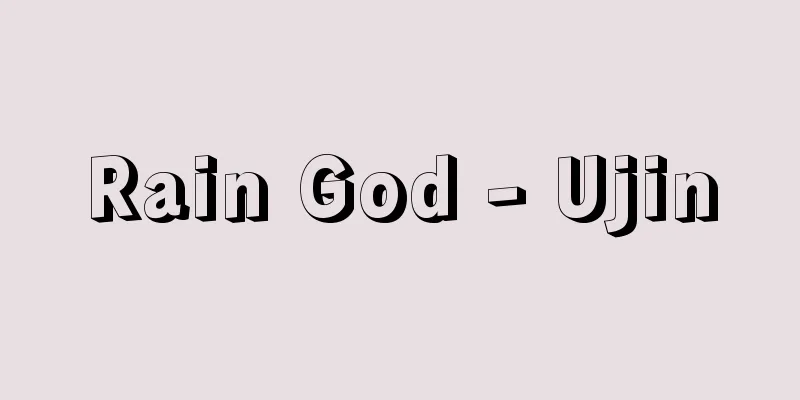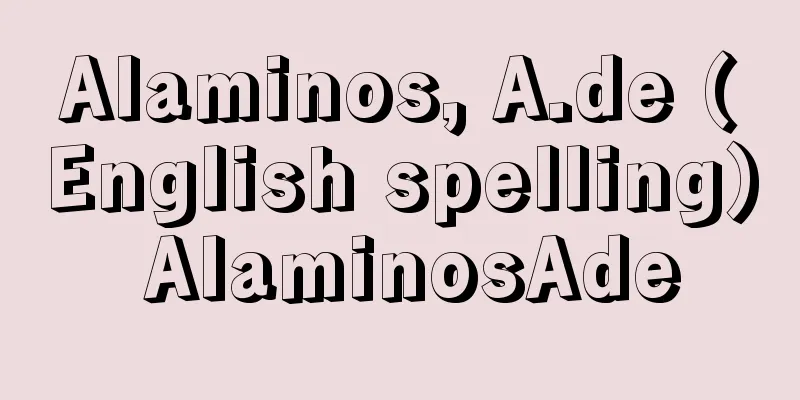Plant quarantine

|
It refers to inspecting plants being imported or moved to check for the presence of pests and prohibiting the movement of dangerous plants. As trade and transportation with other countries and regions becomes more active, new pathogens and pests that have not previously occurred are more likely to attach to and invade and establish on agricultural products imported or moved from other countries or regions, particularly on the stems, leaves, fruits, seeds, and bulbs of plants, causing serious damage to agricultural crops. Examples of this are the fall webworm and potato ring rot disease immediately after World War II, and more recently the rice water weevil, which invaded Japan and caused great damage and became a problem. Plant quarantine is carried out with the aim of preventing the invasion of such pests. In Japan, plant quarantine is carried out based on the Plant Protection Law enacted in 1950, and the Ministry of Agriculture, Forestry and Fisheries' Plant Protection Stations are located in Yokohama, Nagoya, Kobe, Moji, and Naha and are responsible for this task. Plant quarantine is divided into international and domestic quarantine, with the former taking over the latter. There are two types of international quarantine: import quarantine and export quarantine. Import quarantine is in line with the spirit of the International Plant Protection Convention, and involves restricting, prohibiting, inspecting, and disposing of the import of plants and other items to prevent the introduction of pests into one's own country. Export quarantine is carried out at the request of another country to inspect and certify the presence of pests in plants to be exported. Import quarantine does not allow the import of melons, citrus fruits, apples, and other fresh fruits, or raw potatoes, from contaminated areas that are hosts to pests such as Mediterranean fruit flies, codling moths, potato canker, and other pests that may cause great damage. In addition, the import of pathogens, pests, soil, rice, and rice straw is also prohibited, and only those used for testing and research can be imported with the permission of the Minister of Agriculture, Forestry and Fisheries. In contrast, woodwork products, textile products, tea, and processed foods can be imported without inspection. Plants other than prohibited items and uninspected items, i.e. seeds, seedlings, flowers, grains, beans, fruits, vegetables, etc., are inspected by plant quarantine officers at designated locations such as airports, and those that are free of pests or diseases or that have been disinfected are permitted for import. Export inspections are carried out to certify that bulbs such as tulips and lilies, and fruits such as mandarin oranges are free of pests when exported, and some types may require inspection while they are growing in the cultivation area. Domestic quarantine is aimed at preventing the spread of pests that have invaded the country or that occur in certain parts of the country, and at securing high-quality seeds and seedlings. In addition to inspecting designated seeds and seedlings such as potatoes and fruit tree mother plants, domestic quarantine also prohibits or restricts the movement of infesting plants in order to prevent the spread of important pests such as fruit flies that occur in the Ogasawara Islands, Okinawa. [Toshihiro Kajiwara] Source: Shogakukan Encyclopedia Nipponica About Encyclopedia Nipponica Information | Legend |
|
輸入・移動される植物を検査して病害虫の有無を調べ、危険性のある植物の移動を禁止することをいう。諸外国、他の地域との貿易や交通が盛んになるにつれ、これまで発生をみなかった新しい病原菌や害虫が、外国や他の地域から輸入・移動される農産物、とくに植物の茎葉、果実、種子、球根などに付着して侵入、定着して農作物に重大な被害を与えることが多くなる。第二次世界大戦直後にアメリカシロヒトリ、ジャガイモ輪腐(わぐされ)病が、また最近ではイネミズゾウムシなどが日本に侵入して大きな被害を与え問題になったのはその例である。植物検疫はこのような病害虫の侵入を未然に防止することを目的として行われる。 日本では1950年(昭和25)に制定された植物防疫法に基づいて行われており、農林水産省植物防疫所が横浜、名古屋、神戸、門司(もじ)、那覇に設置され、この業務を担当している。植物検疫には国際検疫と国内検疫があり、前者の比重が大きい。 国際検疫には輸入検疫と輸出検疫がある。輸入検疫は、国際植物防疫条約の趣旨に沿って、自国への病害虫の侵入を防止するため、植物などの輸入に関し制限、禁止、検査、廃棄を行うもので、輸出検疫は、他国の要請により、輸出する植物について病害虫の有無を検査し証明するものである。輸入検疫では、チチュウカイミバエ、コドリンガ、ジャガイモがんしゅ病その他大害を与えるおそれのある病害虫の宿主となる汚染地域からのウリ類、ミカン類、リンゴその他の生果実、ジャガイモの生いもなどは輸入できない。また、病原菌、害虫、土、イネ、稲藁(わら)も輸入を禁止されており、試験研究に供するものに限り農林水産大臣の許可を得て輸入できる。これに対し、木工品、繊維製品、製茶、加工食品などは無検査で輸入できる。禁止品と無検査品を除いた植物、すなわち種子、苗、花、穀類、豆類、果実、野菜などは、空港など定められた場所で植物検疫官の検査を受け、病害虫のないもの、または消毒したものは輸入を許可される。輸出検査は、チューリップ、ユリなどの球根類、ミカン類などの果実の輸出に際し病害虫のないことを証明するための検査で、種類によっては栽培地で生育中に検査を必要とすることもある。 国内検疫は、国内に侵入した病害虫、国内の一部に発生する病害虫の蔓延(まんえん)防止、および優良な種苗の確保を目的としたもので、ジャガイモなど指定種苗の検査、果樹母本の検査のほか、沖縄・小笠原(おがさわら)に発生するミバエ類など重要な害虫の蔓延を防止するため、加害する植物の移動を禁止または制限している。 [梶原敏宏] 出典 小学館 日本大百科全書(ニッポニカ)日本大百科全書(ニッポニカ)について 情報 | 凡例 |
Recommend
zeaxanthin
...The color of physalis, chili peppers, egg yolk...
Japanese Exclusion Act
The US quota law of 1924. In the 1907 Japan-US Gen...
Ribo
French psychologist and psychopathologist. Profess...
Dutch Catholic Trade Union Confederation - Dutch Catholic Trade Union Confederation
...Wages and prices continued to rise, and from 1...
Death from traumatic shock
...Toxic shock death occurs when a person is pois...
Bundessoziale
...The methods of handling cases and legal theori...
Inner cycloid - Inner cycloid
⇒Cycloid Source: About Shogakukan Digital Daijisen...
Ursus spelaeus (English spelling) Ursusspelaeus
…The American black bear migrated from Asia in th...
Bynkershoek, Cornelis van
Born: May 29, 1673, Middelburg Died April 16, 1743...
Stacked leaf springs - Kasaneitabane (English spelling) Leaf spring
A spring made by stacking several to a dozen flat...
Shimobashira (Frost pillar) - Keiskea japonica
A perennial plant of the Lamiaceae family, endemic...
Dolichocebus
...These include Aegyptopithecus of the Cercopith...
Zoo - Zoo
A facility that collects, raises, and breeds live...
Red flatworm (Cucujus coccinatus)
An insect of the family Lacertidae in the order Co...
Gamborg - Gamborg
…A sacred and secret Aboriginal ritual, often inv...









